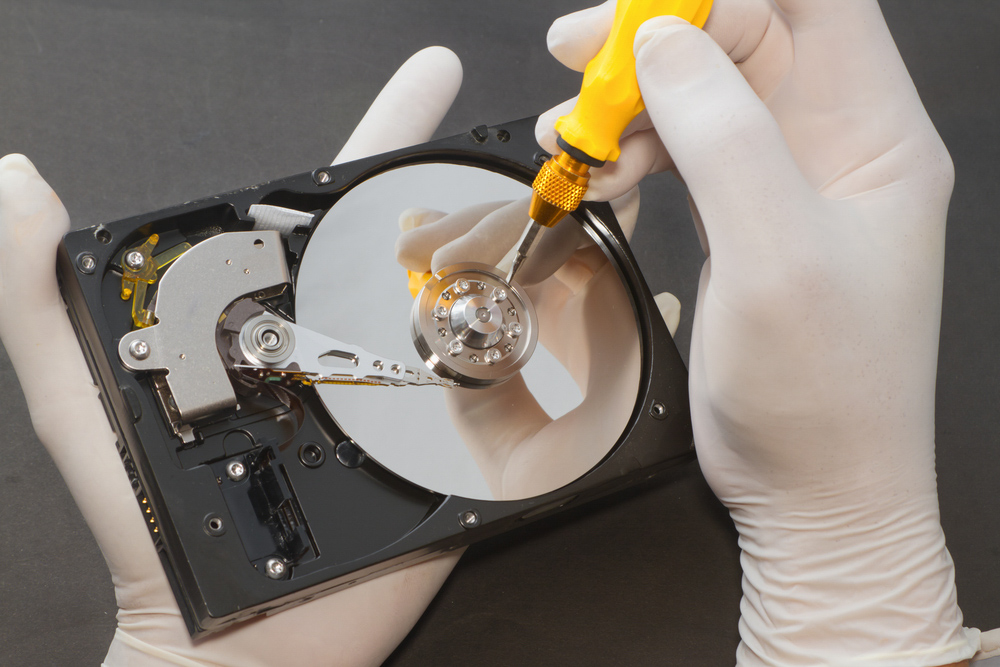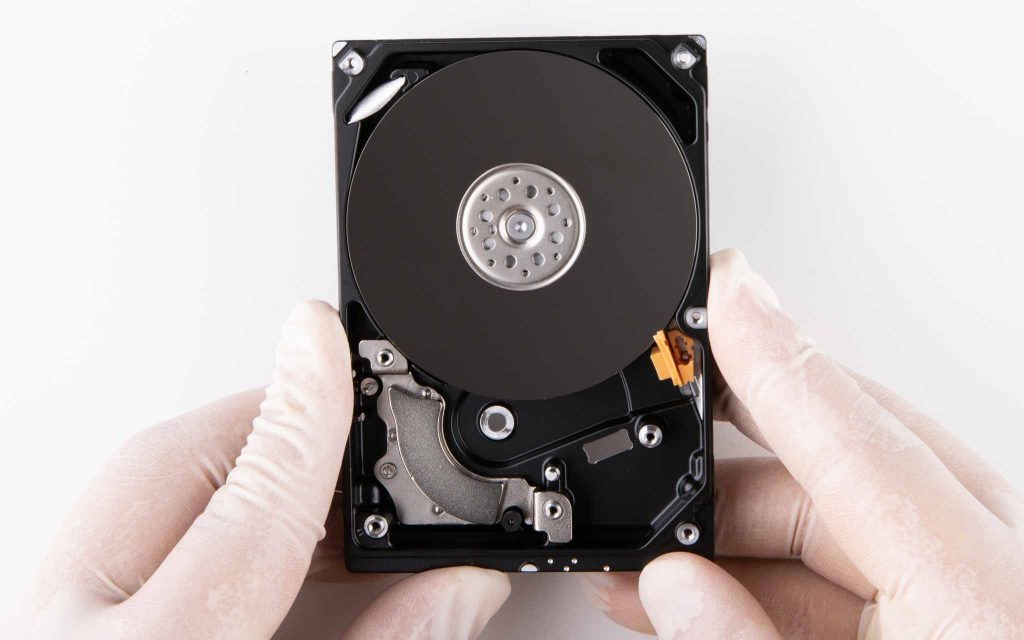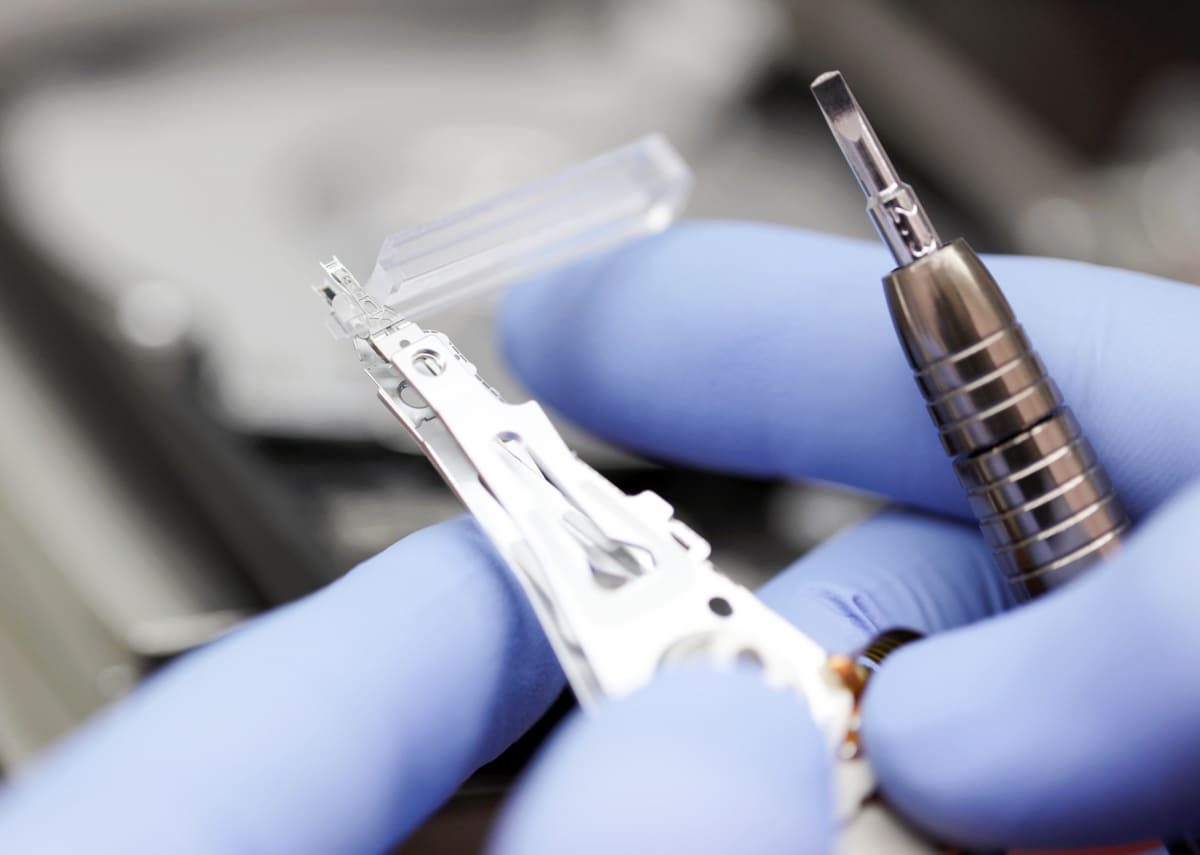Hard drive failure is a complicated situation that can happen for various reasons. Causes of HDD malfunction are categorized into physical, mechanical, and logical. One of the physical problems experienced in hard drives is the disintegration of the drive motor.
This type of failure is usually caused by the hard drive’s fluid dynamic bearing seizing. It is possible to detect that the hard disk starts to fade and immediately stops functioning. Other types of hard disks often record recurrent signals.
Technical Evaluation of Failed Hard Drive
The hard drive with the listed above problems was recently delivered to our laboratory for technical inspection. Standard diagnostics revealed that the read/write heads went stuck on the magnetic surface, and, most importantly, the spindle motor went dead as well. Our technicians assumed that the disk had been physically damaged before.
Modern hard drives contain several chips that prevent hard drives from failing for various reasons. One of them is the shock sensor, which reacts to the disc’s dangerous shaking and sends a signal to the VCM controller. The VCM controller immediately parks the head and can stop the disk rotation.
In general, such a mechanism should protect the disk from additional damage, but in the customer’s case, it did not work. The spindle engine jammed in the fall. The vibration sensor is susceptible to the slightest mechanical vibration on some discs. The sensor data allows the VCM controller to adjust the movement of the heads.
Recovery Process of Failed HDD
After the evaluation was finished and all the critical points established, our technicians started to look for an approach to this problem. They noticed that read/write heads contain magnetic platter particles, which meant that the motor malfunction damaged the read/write heads as well as the platter itself. So to begin the recovery, our engineers cleared the block of magnetic heads using an ultrasonic cleaner.
Then, they came up with a technique for this device, which required several donor drives. It was decided to take a chance and get the maximum amount of data from a failed drive.
The bearing wedge is often complicated because the chip control spindle engine trying to unwind the motor experiences increased loads, is more heated, and usually burns out.

The replacement of the electronic board in such a case may lead to the burning of another chip. To recover information from such hard drive, you need a donor disk, into which the plates are transferred from a broken HDD. The operation is not simple, requiring special equipment for subsequent alignment of plates, as any micro displacement along the axis may cause the heads to fail to respond correctly to the servo.
Results of Our Recovery Process
Our engineers started working on the hard drive using state-of-the-art tools. The recovery was performed in ISO Certified Class 10 Cleanroom to prevent the drive from any subsequent damage from dirt, humidity, and dust.

As a result of our significant work, almost 98% of the data was recovered. This is a very good result for such a damaged device.
We also would like to mention that we do not recommend running a drive when noticing similar symptoms. In such a situation, delegate the issue to us, and we will find the best approach to your case.
Contact PITS Global Data Recovery Services at (888) 611 0737 to start your recovery case today. Our professional customer services will consult you on your problem and figure out the most efficient option to resolve it.
